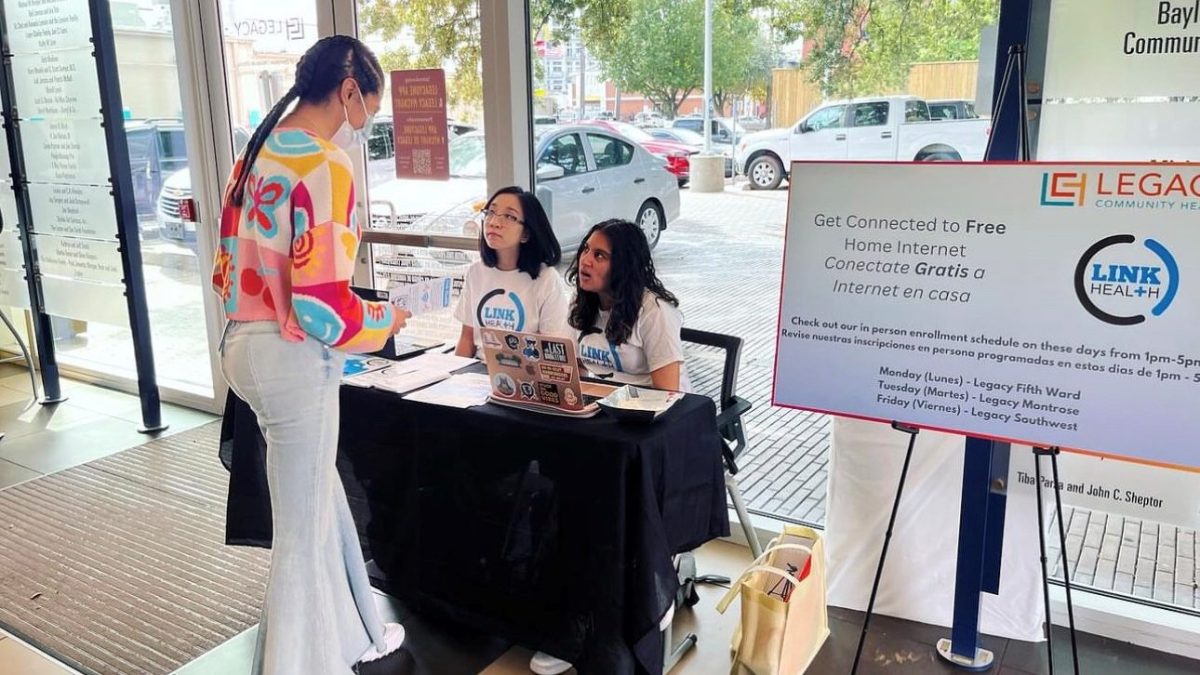End of low-income internet subsidies threatens telehealth access – Marketplace
End of low-income internet subsidies threatens telehealth access Marketplace


Access to Affordable Internet Crucial for Health Care and Education

For Cindy Westman, $30 buys a week’s worth of gas to drive to medical appointments and run errands.
It’s also how much she spent on her monthly internet bill before the federal Affordable Connectivity Program stepped in and covered her payments.
“When you have low income and you are living on disability and your daughter’s disabled, every dollar counts,” said Westman, who lives in rural Illinois.
Connecting Low-Income Households through the Affordable Connectivity Program
More than 23 million low-income households — urban, suburban, rural, and tribal — are enrolled in the federal discount program Congress created in 2021 to bridge the nation’s digital connectivity gap. The program has provided $30 monthly subsidies for internet bills or $75 discounts in tribal and high-cost areas.
But the program is expected to run out of money in April or May, according to the Federal Communications Commission. In January, FCC Chairwoman Jessica Rosenworcel asked Congress to allocate $6 billion to keep the program running until the end of 2024. She said the subsidy gives Americans the “internet service they need to fully participate in modern life.”
The Importance of Internet Access for Health Care
The importance of high-speed internet was seared into the American psyche by scenes of children sitting in parking lots and outside fast-food restaurants to attend school online during the COVID-19 pandemic. During that same period, health care providers and patients like Westman say being connected also became a vital part of today’s health care delivery system.
Westman said her internet connection has become so important to her access to health care she would sell “anything that I own” to stay connected.
Westman, 43, lives in the small town of Eureka, Illinois, and has been diagnosed with genetic and immune system disorders. Her 12-year-old daughter has cerebral palsy and autism.
She steered the $30 saved on her internet toward taking care of her daughter, paying for things such as driving 30 minutes west to Peoria, Illinois, for two physical therapy appointments each week. And with an internet connection, Westman can access online medical records, and whenever possible, she uses telehealth appointments to avoid the hour-plus drive to specialty care.
“It’s essential for me to keep the internet going no matter what,” Westman said.
Telehealth and the Affordable Connectivity Program
Expanding telehealth is a common reason health care providers around the U.S. — in states such as Massachusetts and Arkansas — joined efforts to sign their patients up for the federal discount program.
“This is an issue that has real impacts on health outcomes,” said Dr. Alister Martin, an emergency medicine physician at Massachusetts General Hospital. Martin realized at the height of the pandemic that patients with means were using telehealth to access COVID care. But those seeking in-person care during his ER shifts tended to be lower-income and often people of color.
“They have no other choice,” Martin said. “But they probably don’t need to be in the ER action.”
Martin became a White House fellow and later created a nonprofit that he said has helped 1,154 patients at health centers in Boston and Houston enroll in the discount program.
At the University of Arkansas for Medical Sciences, a federal grant was used to conduct dozens of outreach events and help patients enroll, said Dr. Joseph Sanford, an anesthesiologist and the director of the system’s Institute for Digital Health & Innovation.
“We believe that telehealth is the great democratization to access to care,” Sanford said. New enrollment in the discount program was halted nationwide in February.
Challenges and Barriers to Enrollment
Leading up to the enrollment halt, Sen. Peter Welch, a Vermont Democrat, led a bipartisan effort to introduce the Affordable Connectivity Program Extension Act in January. The group requested $7 billion — more than the FCC’s ask — to keep the program funded. “Affordability is everything,” Welch said.
In December, federal regulators surveyed program recipients and found that 22% reported no internet service before, and 72% said they used their ACP-subsidized internet to “schedule or attend health care appointments.”
Estimates of how many low-income U.S. households qualify for the program vary, but experts agree that only about half of the roughly 50 million eligible households have signed on.
“A big barrier for this program generally was people don’t know about it,” said Brian Whitacre, a professor and the Neustadt chair in the department of agricultural economics at Oklahoma State University.
Whitacre and others said rural households should be signing up at even higher rates than urban ones because a higher percentage of them are eligible.
Yet people found signing up for the program laborious. Enrollment was a two-step process. Applicants were required to get approved by the federal government then work with an internet service provider that would apply the discount. The government application was online — hard to get to if you didn’t yet have internet service — though applicants could try to find a way to download a version, print it, and submit the application by mail.
When Frances
SDGs, Targets, and Indicators Analysis
1. Which SDGs are addressed or connected to the issues highlighted in the article?
- SDG 1: No Poverty – The article discusses low-income households and the need for affordable internet access.
- SDG 3: Good Health and Well-being – The article highlights the importance of internet access for accessing healthcare, including telehealth appointments.
- SDG 4: Quality Education – The article mentions children attending school online during the COVID-19 pandemic, emphasizing the need for internet access for education.
- SDG 9: Industry, Innovation, and Infrastructure – The article focuses on the issue of digital connectivity and the need for high-speed internet access.
- SDG 10: Reduced Inequalities – The article discusses the digital connectivity gap and the federal discount program aimed at bridging this gap for low-income households.
2. What specific targets under those SDGs can be identified based on the article’s content?
- Target 1.4: By 2030, ensure that all men and women, in particular, the poor and the vulnerable, have equal rights to economic resources, as well as access to basic services, ownership, and control over land and other forms of property.
- Target 3.8: Achieve universal health coverage, including financial risk protection, access to quality essential health-care services, and access to safe, effective, quality, and affordable essential medicines and vaccines for all.
- Target 4.c: By 2030, substantially increase the supply of qualified teachers, including through international cooperation for teacher training in developing countries, especially least developed countries and small island developing states.
- Target 9.c: Significantly increase access to information and communications technology and strive to provide universal and affordable access to the internet in least developed countries by 2020.
- Target 10.2: By 2030, empower and promote the social, economic, and political inclusion of all, irrespective of age, sex, disability, race, ethnicity, origin, religion, or economic or other status.
3. Are there any indicators mentioned or implied in the article that can be used to measure progress towards the identified targets?
- Indicator 1.4.2: Proportion of total adult population with secure tenure rights to land, with legally recognized documentation and who perceive their rights to land as secure, by sex and by type of tenure.
- Indicator 3.8.1: Coverage of essential health services (defined as the average coverage of essential services based on tracer interventions that include reproductive, maternal, newborn and child health, infectious diseases, non-communicable diseases, and service capacity and access).
- Indicator 4.c.1: Proportion of teachers in: (a) pre-primary; (b) primary; (c) lower secondary; and (d) upper secondary education who have received at least the minimum organized teacher training (e.g., pedagogical training) pre-service or in-service required for teaching at the relevant level in a given country.
- Indicator 9.c.1: Proportion of population covered by a mobile network, by technology.
- Indicator 10.2.1: Proportion of people living below 50 percent of median income, by age, sex, and disability.
Table: SDGs, Targets, and Indicators
| SDGs | Targets | Indicators |
|---|---|---|
| SDG 1: No Poverty | Target 1.4: By 2030, ensure that all men and women, in particular, the poor and the vulnerable, have equal rights to economic resources, as well as access to basic services, ownership, and control over land and other forms of property. | Indicator 1.4.2: Proportion of total adult population with secure tenure rights to land, with legally recognized documentation and who perceive their rights to land as secure, by sex and by type of tenure. |
| SDG 3: Good Health and Well-being | Target 3.8: Achieve universal health coverage, including financial risk protection, access to quality essential health-care services, and access to safe, effective, quality, and affordable essential medicines and vaccines for all. | Indicator 3.8.1: Coverage of essential health services (defined as the average coverage of essential services based on tracer interventions that include reproductive, maternal, newborn and child health, infectious diseases, non-communicable diseases, and service capacity and access). |
| SDG 4: Quality Education | Target 4.c: By 2030, substantially increase the supply of qualified teachers, including through international cooperation for teacher training in developing countries, especially least developed countries and small island developing states. | Indicator 4.c.1: Proportion of teachers in: (a) pre-primary; (b) primary; (c) lower secondary; and (d) upper secondary education who have received at least the minimum organized teacher training (e.g., pedagogical training) pre-service or in-service required for teaching at the relevant level in a given country. |
| SDG 9: Industry, Innovation, and Infrastructure | Target 9.c: Significantly increase access to information and communications technology and strive to provide universal and affordable access to the internet in least developed countries by 2020. | Indicator 9.c.1: Proportion of population covered by a mobile network, by technology. |
| SDG 10: Reduced Inequalities | Target 10.2: By 2030, empower and promote the social, economic, and political inclusion of all, irrespective of age, sex, disability, race, ethnicity, origin, religion, or economic or other status. | Indicator 10.2.1: Proportion of people living below 50 percent of median income, by age, sex, and disability. |
Behold! This splendid article springs forth from the wellspring of knowledge, shaped by a wondrous proprietary AI technology that delved into a vast ocean of data, illuminating the path towards the Sustainable Development Goals. Remember that all rights are reserved by SDG Investors LLC, empowering us to champion progress together.
Source: marketplace.org

Join us, as fellow seekers of change, on a transformative journey at https://sdgtalks.ai/welcome, where you can become a member and actively contribute to shaping a brighter future.







